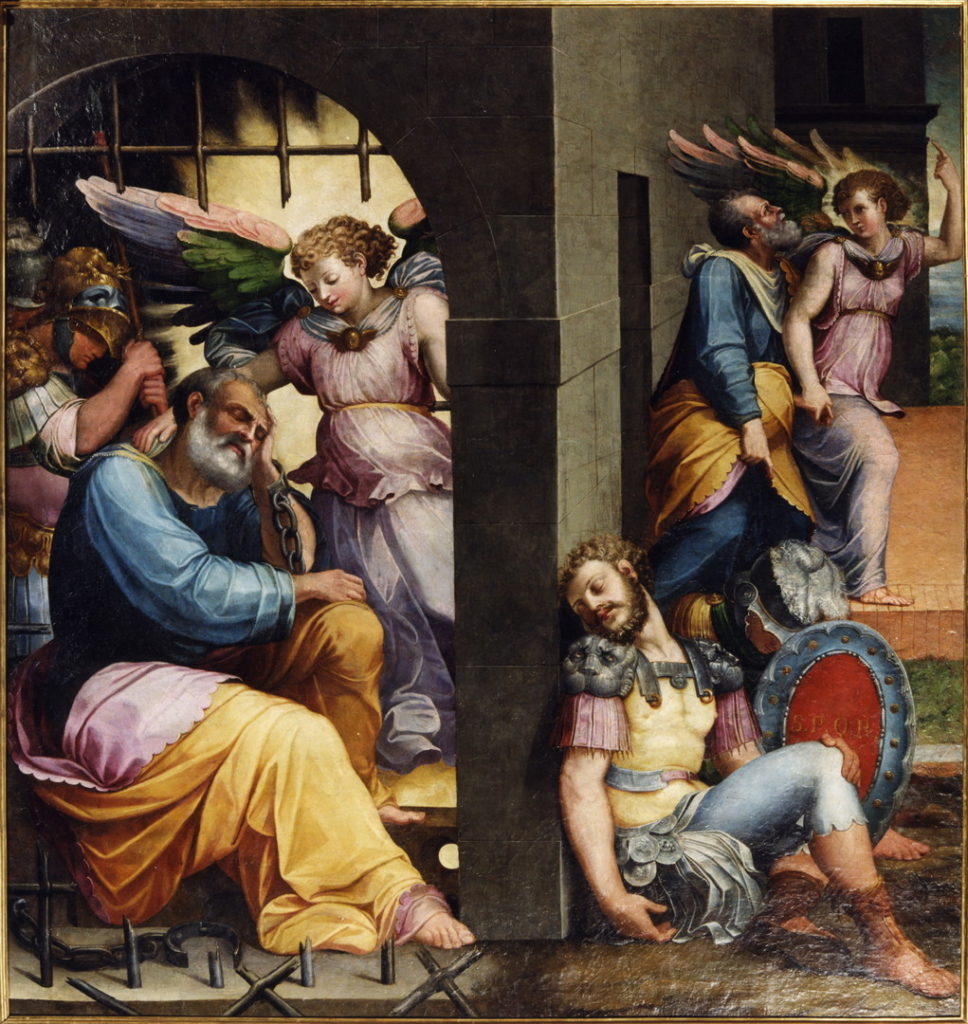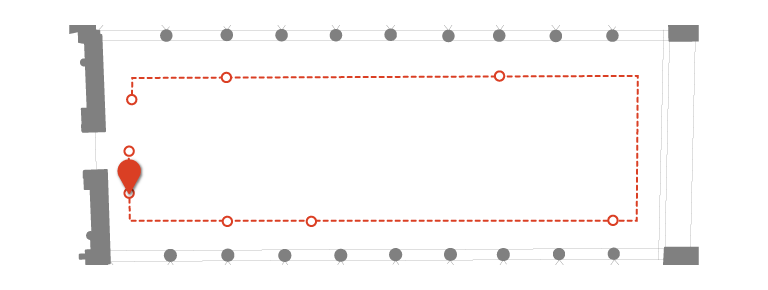Tu sei qui
THE LIBERATION OF ST. PETER
The scene is inspired by its famous prototype in the Room of Heliodorus in the Vatican, frescoed by Raphael, particularly in its painstaking illustration of the iron bars, as well as the strong contrast created by the angel’s light piercing the darkness of the prison. The refined presentation of some of the decorative elements, such as the armour of the sleeping soldier in the foreground, the golden helmet of the soldier behind St. Peter, and the jewel enriching the weightless clothing of the angel, stand out. The undeniable influence exerted by Raphaelesque painting is evidence of the success that the Farnese builders of the Rocca Paolina met with among Perugian artists in the middle of the 16th century. It was not by chance that Orazio Alfani, painter of the Lives of Sts. Peter and Paul was assisted, in this his first work for the Church of St. Peter (1547-1548), by Leonardo Cungi, a painter in Vasari’s inner circle.


